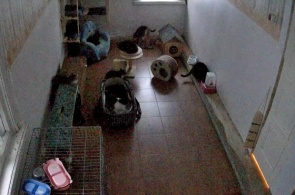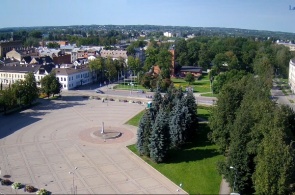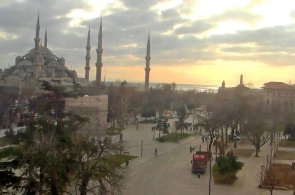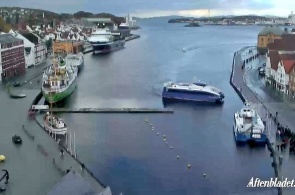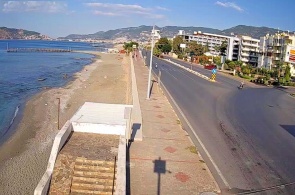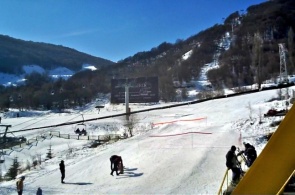Representing Latvia without Daugavpils is the same as talking about Russia, forgetting about Petersburg. This city is one of the most amazing in the whole Baltic States. It sprawls on the picturesque banks of the Western Dvina. At the time of Kievan Rus, this river connected the Slavic lands with the Baltic Sea. Daugavpils acquired a special status even during the existence of the Grand Duchy of Lithuania. At that time, Lithuanians, Poles, Knights of the Livonian Order, the troops of Ivan the Terrible mercilessly fought outside the city.
Dinaburg became part of the Russian Empire only in 1772 as a result of the first partition of the Polish-Lithuanian Commonwealth. In order to protect the western borders of the state, the city, the center of which was formerly a fortification, was turned into a real fortress. It is a pity that the present Dinaburg Castle has not survived until today. He was dismantled at the beginning of the XIX century during the redevelopment of the city. The building was located 20 kilometers from modern Daugavpils.
Speaking about the sights of the second most important city in Latvia, first of all, we should mention the Daugavpils fortress. The construction of this object began before the invasion of Napoleon in Russia. Residents of Daugavpils are proud that their fortress has become the only monument of military architecture in Eastern Europe that has not changed since its foundation.
The current architectural appearance of Daugavpils was formed in the XIX century. Most of the buildings here are built of red brick. The objects are built in the style of Latvian Baroque and eclecticism. The part of buildings is planned by the main Daugavpils architect Wilhelm Neumann in 1878-1895.
The Church Hill, which is also called the Temple Hill, deserves special attention. It is located in the city center. Since Daugavpils is a multicultural city, here you can see the Lutheran Church of St. Luther, the Orthodox Boris and Gleb Cathedral, and the Catholic Church of the Blessed Virgin Mary. And nearby is the synagogue, which also has a museum dedicated to the history of the Jewish community in Daugavpils and all of Latvia.
Among the old streets of the city, the Unity House, built in the 30s of the 20th century, stands out as a bright spot. This object is the embodiment of Latvian modernism. Its facades surprise with unique plastic solutions.
Daugavpils is not the city that, in an effort to catch up and overtake Riga, loses its essence. This is an amazing place, ready to charm anyone with its atmosphere.
More details
The animal shelter "Otrā Māja" was founded in 2014 on the initiative of the nongovernmental organization "Otrā māja dzīvniekiem"
Daugavpils, Latvia
08.02.17
The camera is installed on the building of the hotel Latgola in Daugavpils, Latvia. The view covers an area of Unity and adjoining buildings and gardens. This is the main square of the city, located in its Central part, which began to be built in the XIX century. The square of Unity is more than 11 thousand m2. There are concerts, fairs and other cultural and social events. In the winter, in the middle of the square is established, the main city Christmas tree.
Daugavpils, Latvia
13.08.16
popular camerasshow all
Sultanahmet or Blue mosque is a work of art of Turkish-Islamic architecture. Its construction began in 1609, the construction work took seven years to a 19-year-old Sultan. The name of the mosque was, due to its interesting and unique finish.
Istanbul, Turkey
Stavanger, a town in the commune of Norway, located in the South-Western part of the country, on the Peninsula, rich in minerals. Tanager combines the influence of foreign organisations such as NATO and oil companies. The camera will shoot the harbour and the promenade of the city.
Stavanger, Norway
A webcam broadcasts the district of Tosmur - quiet location in the Eastern part of Alanya, located only five kilometres from the city centre. Its rural way of life and the beauty of untouched nature attract tourists.
Alanya, Turkey
Shark Island or in English of Shark island, located in the harbour city of Sydney, the suburb of Point Piper. The locals, the natives named the island Boambilly, which translated means Shark island. After all, this name is not casual, because it's mean and looks like a shark fin.
Sydney, Australia
The webcam is installed on site Alva. Tsaghkadzor ski resort town in Armenia. Tsaghkadzor is a beautiful mountainous area among deciduous forests, with a pleasant winter climate, and clean fresh air. The highest point is 1800 meters. The truss type is a classic, divided into three.
Tsakhkadzor, Armenia

